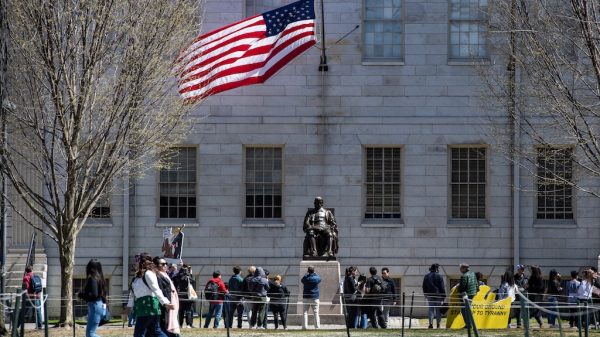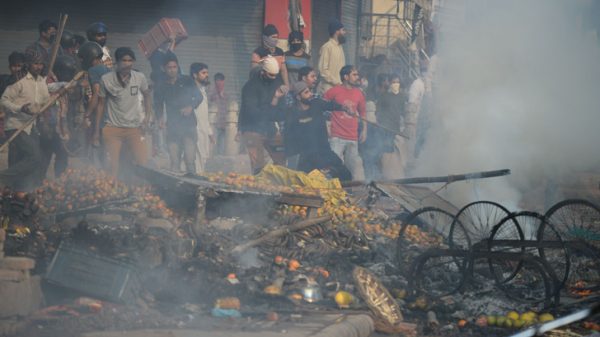Ceasefire that changed nothing

Why do India and Pakistan keep returning to the brink? One answer lies in the domestic political utility of conflict. When internal problems — economic crises, electoral uncertainties, or governance failures — mount, external enemies are often invoked to rally nationalist sentiments, writes HM Nazmul Alam
BY THE time dusk fell on, the smoke had not yet cleared from the borderlands of Kashmir, and yet an announcement rang out across global airwaves: India and Pakistan had agreed to a ceasefire. US president Donald Trump, with characteristic theatricality, declared on his truth social account that both nations, after all-night talks allegedly brokered by the United States, would halt all military activities across land, sea, and air. ‘extraordinary diplomatic wisdom,’ Trump said, hailing the agreement.
But history has taught us that when India and Pakistan shake hands, their other fingers remain tightly coiled around triggers.
The echoes of missiles and drones might have temporarily faded, but what lies beneath this ‘ceasefire’ is a volatile status quo — a festering conflict that has survived over 70 years of political charades, episodic diplomacy and bloodshed. This latest flare-up, prompted by India’s Operation Sindoor in response to the Pahalgam attack, and countered by Pakistan’s Operation Bunyan-un-Marsus, has followed an alarmingly familiar trajectory: escalation, retaliatory strikes, casualties, international panic and a rushed mediation. We have seen this dance before. And we will see it again.
What unfolded in the days leading up to the ceasefire might not be called a ‘war’ in formal terms, neither side officially declared it, but it had all the hallmarks of one. As international law expert Ahmer Bilal Sufi remarked, in the post-UN Charter world, countries avoid labelling conflicts as wars because of the legal and ethical baggage the term carries. Admitting to a war means accepting the obligations of international law and the accountability for potential war crimes. And so, euphemisms reign: ‘military operation,’ ‘counter-terror strike,’ ‘retaliatory action.’
But as Sean Bell, a UK-based military analyst, warned, this tit-for-tat pattern of ‘operation’ and retaliations can spiral beyond control. When both countries are armed with nuclear weapons and guided by nationalistic fervour, the escalation ladder is short and steep.
Indeed, the most terrifying phrase used during this round of hostilities wasn’t ‘missile strike’ or ‘cross-border shelling’, it was ‘National Command Authority.’ That’s the term Pakistan invoked, signalling its preparedness to bring nuclear deterrence into play. Such coded messaging was designed for strategic signalling, but it also points to how quickly the subcontinent can descend from conventional to catastrophic.
Despite the celebratory tone of the ceasefire announcement, signs of fragility emerged almost immediately. Within hours, India accused Pakistan of violating the agreement, and Pakistan insisted it was showing ‘restraint.’ The ink had barely dried on the press releases when both sides returned to old habits.
This is not surprising. History is replete with examples of ceasefires between India and Pakistan collapsing under the weight of mutual distrust. From the UN-mediated 1948 ceasefire, to the Tashkent Agreement of 1966, to Clinton’s intervention during the 1999 Kargil War, to the uneasy truce after the 2019 Balakot strikes — each pause has ultimately been followed by renewed hostilities. In fact, as Michael Kugelman of the Wilson Centre aptly observed, this latest ceasefire came ‘too quickly, under extreme tension,’ and lacked the deep assurance needed for lasting peace.
It’s not just about missiles and military protocol; it’s about mindset. For Indian policymakers, especially under the right-wing leadership of prime minister Narendra Modi, any movement perceived as conciliatory toward Pakistan is seen as weakness. On the other side, Pakistan’s military-jihadi complex thrives on the India threat narrative. Mutual demonisation isn’t just a political tool, it is a structural pillar of both national identities.
One might be tempted to see the United States as the knight in diplomatic armour. Trump’s public proclamation, secretary of state Marco Rubio’s last-minute intervention, and reports of three dozen nations being involved in mediation suggest a highly coordinated effort to halt war.
But it is important not to mistake mediation for resolution.
As Lahore-based defence analyst Ijaz Haider noted, the US initially maintained distance, only stepping in when Pakistan began signalling nuclear escalation. This crisis management style — observing until the last minute and then scrambling to prevent apocalypse — does not resolve the underlying animosity. It merely suspends the fire.
Former Indian High Commissioner Ajay Bisaria has previously criticised American self-congratulation in such moments, suggesting that the risks of nuclear war are often exaggerated for diplomatic drama. Still, even if the threat of a mushroom cloud was overstated, the very fact that such a threat can be wielded so cavalierly reveals the fragility of deterrence theory in the India-Pakistan context.
Moreover, some Indian outlets argue that this ceasefire was brokered not by the US, but by military officials of both countries through existing communication channels. If true, it underscores not just the irrelevance of global powers in regional tensions, but also the insularity and unpredictability of South Asian military diplomacy.
Experts like Subir Sinha of SOAS have suggested that reviving the Indus Waters Treaty and the Simla Agreement could help stabilise the post-ceasefire environment. But such hopes may be misplaced. India suspended the Indus Waters Treaty after the Pahalgam attack, and Pakistan responded with threats to withdraw from Simla.
These treaties, once seen as models of bilateral cooperation, now serve as pawns in a larger geopolitical game. Their symbolic invocation in times of crisis does little to restore faith in their actual power.
The more urgent question is whether any treaty or agreement can hold in the face of competing political ideologies, military posturing, and national narratives that demand enmity.
Why do India and Pakistan keep returning to the brink?
One answer lies in the domestic political utility of conflict. When internal problems — economic crises, electoral uncertainties, or governance failures — mount, external enemies are often invoked to rally nationalist sentiments.
India’s ruling party has frequently used anti-Pakistan rhetoric as a rallying cry, especially before elections. Similarly, Pakistan’s military has historically used the India threat to justify its political dominance and massive defence budgets.
This symbiotic belligerence is not about security; it is about survival of regimes, ideologies and political careers.
Even more concerning is the possibility that these skirmishes could eventually slip into a nuclear exchange. Christopher Cleary, a political science professor, suggests that political scientists define war as conflict resulting in over 1,000 deaths, while governments define it through formal declarations. But in the case of India and Pakistan, war might arrive unannounced — without declaration, but with devastation.
Pakistan’s veiled references to the National Command Authority and India’s aggressive posture remind us that both nations operate under doctrines that envision nuclear options in response to conventional attacks. The doctrine of ‘minimum credible deterrence’ (Pakistan) and ‘no first use’ (India) are not shields — they are triggers waiting to be misinterpreted.
The Kargil conflict of 1999 happened under the nuclear shadow. This latest round of hostilities took place under the same canopy. The next one might not end with a ceasefire.
Until the core disputes are addressed — until Kashmir is not treated as a battleground, until cross-border terrorism is eliminated, until both governments move beyond nationalist posturing — this silence will remain haunted by the possibility of another war, one that may not be as merciful as the last.
The Indian subcontinent, with its nuclear arsenal, volatile politics, and historical wounds, does not need another ‘operation’ or a flurry of midnight diplomacy. It needs political imagination, moral courage, and perhaps, as Bertrand Russell once said, ‘the ability to coexist with difference, or perish.’
In the end, we are not witnessing the triumph of peace, but the temporary truce of political expediency. And as long as that remains the case, the next war is not a question of if, it sadly is, a matter of when.
HM Nazmul Alam is a Dhaka-based academic, journalist, and political analyst.























Leave a Reply